




| House spiders of the atrica group (Tegenaria (atrica) sp. (C.L. Koch, 1843)) |





|
|
Scientific name: Tegenaria (atrica) sp. (C.L. Koch, 1843) Common name: House spiders of the atrica group Other names: Dust Spider, Dustbunny Spider, Giant House Spider, Western House Spider. French name: Tégénaires du groupe atrica. Tégénaire noire (Tegeneria atrica), Grande tégénaire (Tegeneria duellica) formerly known as Tegeneria gigantea. Order: Araneae Family: Agelenidae Size: Female: 20mm. Male: 15 mm. Leg span up to 10 cm. Biotope: Houses, cellars and attics and also in the surroundings of houses. Cool and humid places. Web: Usually a flat triangular shape, in a corner, with a funnel where the House spider can take refuge. At some places you can find a great number of webs very close to each other. Observation period: All year long. Geographic area: Widespread in Europe, including cold countries. It has been introduced to all temperate areas in the world because it was carried on transport ships. |
It is very difficult to tell the House Spiders of the atrica group apart based on pictures only. This group includes the Dust Spider (Tegeneria atrica) C.L. Koch, 1843, the Giant House Spider (Tegeneria duellica) Simon, 1875 and the Western House Spider (Tegeneria saeva) Blackwall, 1844. These are large size spiders with uniform coloured legs and with dark markings on the cephalothorax and on the abdomen. The cephalothorax shows a pale median stripe and pale patches on both sides. Tegeneria often walk far from their web. Females let a silk thread that males can detect. They feed on insects, flies, moths, etc. Tegeneria can over winter without feeding. Among other Tegeneria species, with uniform coloured legs, let's mention the Hobo Spider (Tegenaria agrestis) which is a slightly smaller size. It is rather found outside buildings (in Europe) in waste lands or low grasses. You can confirm the species identification with a view of the sternum (located on the underside between the base of the legs). It shows a broad median stripe which strongly tappers at the rear tip. Malthonica picta also shows uniform coloured legs but is a very smaller size. |
| [To know more about House spiders of the atrica group] [Next picture] [Top] |
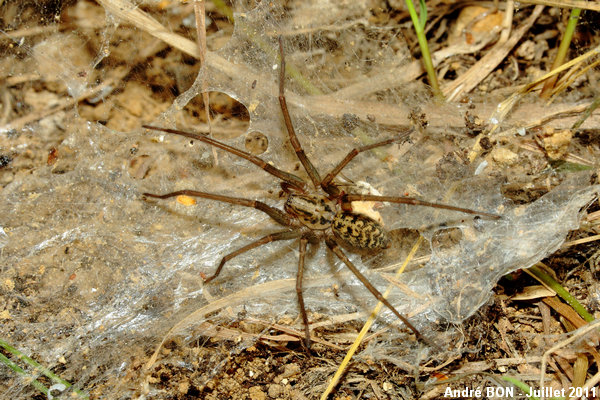
|
I have observed this rather large size House Spider under one stone in my garden. |
| [To know more about House spiders of the atrica group] [Next picture] [Previous picture] [Top] |
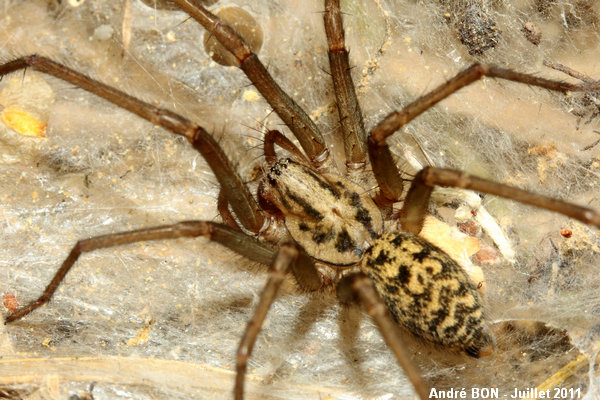
|
Here is a closer view. You can clearly see that the legs are not ringed. |
| [To know more about House spiders of the atrica group] [Next picture] [Previous picture] [Top] |
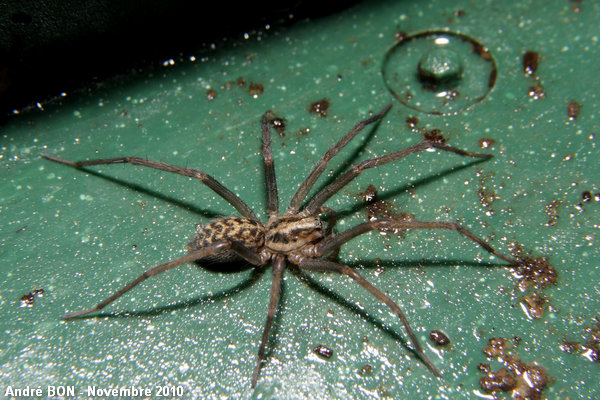
|
I have observed this House Spider of the atrica group in my compost heap. |
| [To know more about House spiders of the atrica group] [Next picture] [Previous picture] [Top] |
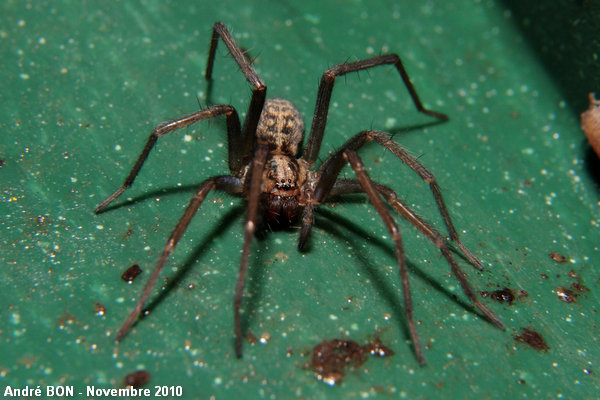
|
The large size, the uniform coloured legs, the markings on the cephalothorax and on the abdomen seem to indicate a House Spider of the atrica group. |
| [To know more about House spiders of the atrica group] [Previous picture] [Top] |
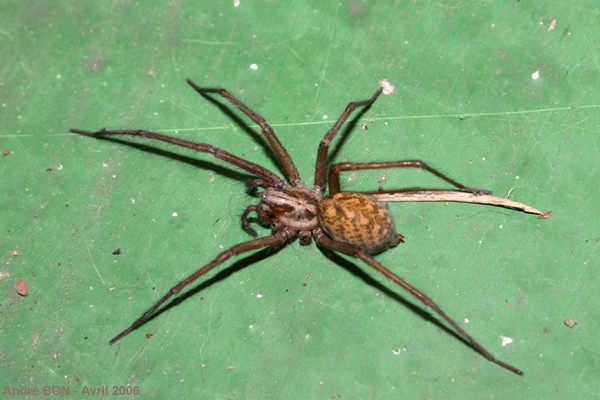
|
The Great Spring Cleaning disturbed the quiet life of this House Spider in my garage. But is the House Spider's life so quiet in my garage? This one has already lost two legs on the left side! |